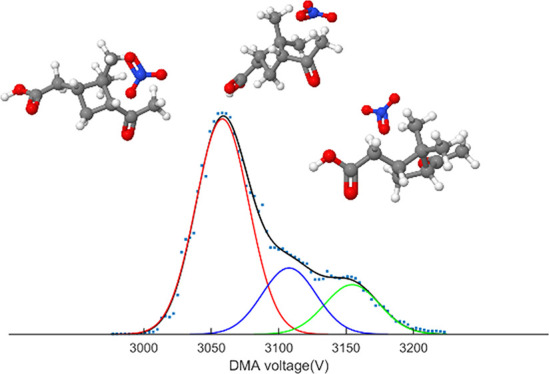The growth of nucleated organic particles has been investigated in controlled laboratory experiments under atmospheric conditions; initial growth is driven by organic vapours of extremely low volatility, and accelerated by more abundant vapours of slightly higher volatility, leading to markedly different modelled concentrations of atmospheric cloud condensation nuclei when this growth mechanism is taken into account. Supplementary information The online version of this article (doi:10.1038/nature18271) contains supplementary material, which is available to authorized users. The effect of atmospheric aerosols on clouds and the radiative forcing of the climate system remains poorly understood. It is thought that nucleation of aerosol particles from atmospheric vapours rarely proceeds in the absence of sulfuric acid. Now two papers in this week’s Nature point to a previously unappreciated role for highly oxygenated molecules (HOMs) in promoting new particle formation and growth, essentially a mechanism that produces aerosols in the absence of pollution. Jasper Kirkby et al . show that aerosol particles can form as a result of ion-induced nucleation of HOMs in the absence of sulfuric acid under conditions relevant to the atmosphere in the CLOUD chamber at CERN. Jasmin Tröstl et al . examined the role of organic vapours in the initial growth of nucleated organic particles in the absence of sulfuric acid in the CERN CLOUD chamber under atmospheric conditions. They find that the organic vapours driving initial growth have extremely low volatilities. With increasing particle size, subsequent growth is primarily due to more abundant organic vapours of slightly higher volatility. Supplementary information The online version of this article (doi:10.1038/nature18271) contains supplementary material, which is available to authorized users. About half of present-day cloud condensation nuclei originate from atmospheric nucleation, frequently appearing as a burst of new particles near midday 1 . Atmospheric observations show that the growth rate of new particles often accelerates when the diameter of the particles is between one and ten nanometres 2 , 3 . In this critical size range, new particles are most likely to be lost by coagulation with pre-existing particles 4 , thereby failing to form new cloud condensation nuclei that are typically 50 to 100 nanometres across. Sulfuric acid vapour is often involved in nucleation but is too scarce to explain most subsequent growth 5 , 6 , leaving organic vapours as the most plausible alternative, at least in the planetary boundary layer 7 , 8 , 9 , 10 . Although recent studies 11 , 12 , 13 predict that low-volatility organic vapours contribute during initial growth, direct evidence has been lacking. The accelerating growth may result from increased photolytic production of condensable organic species in the afternoon 2 , and the presence of a possible Kelvin (curvature) effect, which inhibits organic vapour condensation on the smallest particles (the nano-Köhler theory) 2 , 14 , has so far remained ambiguous. Here we present experiments performed in a large chamber under atmospheric conditions that investigate the role of organic vapours in the initial growth of nucleated organic particles in the absence of inorganic acids and bases such as sulfuric acid or ammonia and amines, respectively. Using data from the same set of experiments, it has been shown 15 that organic vapours alone can drive nucleation. We focus on the growth of nucleated particles and find that the organic vapours that drive initial growth have extremely low volatilities (saturation concentration less than 10 −4.5 micrograms per cubic metre). As the particles increase in size and the Kelvin barrier falls, subsequent growth is primarily due to more abundant organic vapours of slightly higher volatility (saturation concentrations of 10 −4.5 to 10 −0.5 micrograms per cubic metre). We present a particle growth model that quantitatively reproduces our measurements. Furthermore, we implement a parameterization of the first steps of growth in a global aerosol model and find that concentrations of atmospheric cloud concentration nuclei can change substantially in response, that is, by up to 50 per cent in comparison with previously assumed growth rate parameterizations. Supplementary information The online version of this article (doi:10.1038/nature18271) contains supplementary material, which is available to authorized users.


